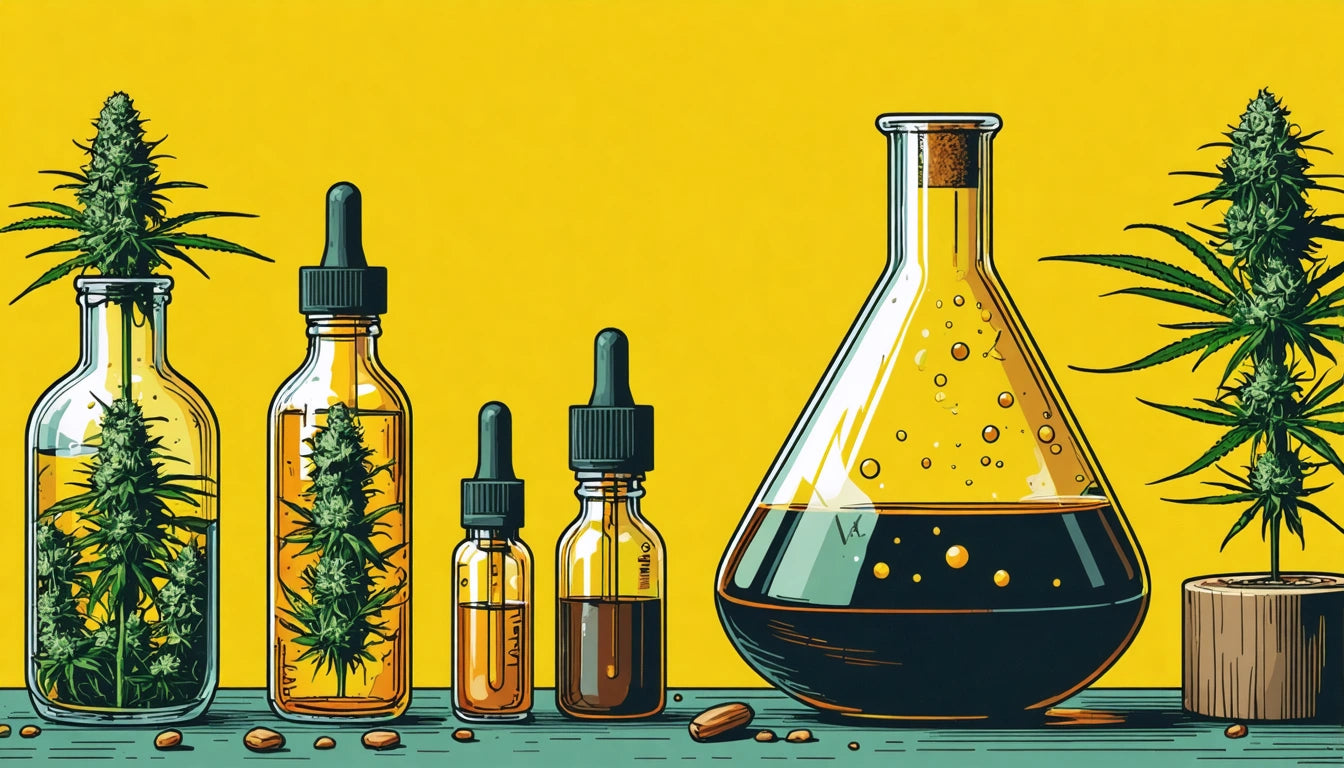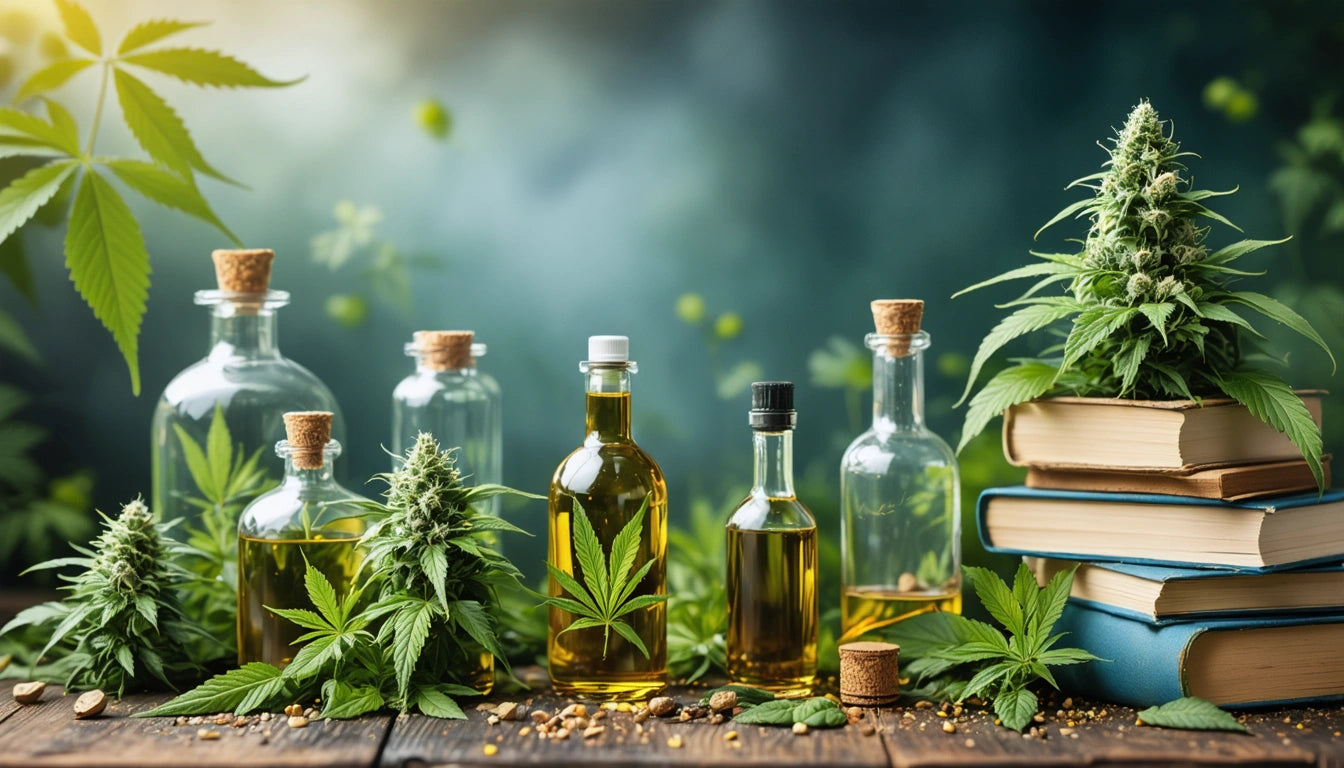Table of Contents
- Understanding Terpenes and Their Importance
- Solvent-Based Extraction Methods and Terpene Preservation
- Solventless Extraction Techniques for Terpene Retention
- Temperature and Pressure: Critical Factors in Terpene Preservation
- Storage and Packaging Solutions for Preserving Terpenes
- Future Developments in Terpene-Focused Extraction Technology
The cannabis industry has evolved significantly in recent years, with consumers becoming increasingly knowledgeable about the compounds that contribute to their experience. Among these compounds, terpenes stand out for their aromatic properties and potential therapeutic benefits. Understanding how different extraction methods affect terpene retention is crucial for producers aiming to create high-quality, flavorful concentrates that deliver the full spectrum of cannabis effects.
Understanding Terpenes and Their Importance
Terpenes are aromatic compounds found in many plants, including cannabis. They're responsible for the distinctive scents and flavors associated with different cannabis strains. Beyond their sensory appeal, terpenes contribute to the entourage effect, working synergistically with cannabinoids to enhance therapeutic outcomes.
Common cannabis terpenes include myrcene (earthy), limonene (citrus), pinene (pine), and linalool (floral). Each has unique properties that may influence mood, energy levels, and potentially offer specific health benefits. Terpenes affect mood, energy, and sleep patterns in ways that are still being researched, making their preservation in cannabis products increasingly important.
Solvent-Based Extraction Methods and Terpene Preservation
Hydrocarbon Extraction (BHO, PHO)
Butane Hash Oil (BHO) and Propane Hash Oil (PHO) extraction methods use hydrocarbons to strip cannabinoids and terpenes from plant material. These methods can be effective for terpene retention when performed at low temperatures, as many terpenes are volatile and can evaporate when exposed to heat.
BHO extraction typically preserves a wide spectrum of terpenes, resulting in concentrates like shatter, wax, and live resin that maintain much of the plant's original aromatic profile. Live resin, made from flash-frozen plant material, is particularly noted for its exceptional terpene preservation.
CO2 Extraction
Supercritical CO2 extraction offers precise control over pressure and temperature, allowing for selective compound extraction. While CO2 extraction is considered cleaner and safer than hydrocarbon methods, it can sometimes strip away more volatile terpenes unless carefully calibrated.
Subcritical CO2 extraction operates at lower temperatures and pressures, making it better suited for preserving temperature-sensitive terpenes, though yields are typically lower compared to supercritical methods.
Solventless Extraction Techniques for Terpene Retention
Solventless methods have gained popularity for their ability to preserve terpene profiles without introducing external chemicals.
Rosin Press
Rosin extraction uses heat and pressure to squeeze resinous sap from cannabis flower or hash. This method can preserve terpenes exceptionally well when performed at lower temperatures (160-190 °F), though higher temperatures may increase yields at the expense of some terpene loss.
Ice Water Extraction
Ice water hash, or bubble hash, involves agitating cannabis in ice water to separate trichomes, which contain both cannabinoids and terpenes. This cold-temperature process helps preserve volatile terpenes that might otherwise be lost during heat-based extractions.
The quality of terpene preservation in ice water hash depends largely on post-extraction handling and drying techniques. Freeze-drying, rather than air-drying, can significantly improve terpene retention.
Temperature and Pressure: Critical Factors in Terpene Preservation
Regardless of the extraction method chosen, temperature management is paramount for terpene retention. Most cannabis terpenes begin to evaporate at temperatures between 70 °F and 100 °F, with complete degradation occurring at higher temperatures.
This temperature sensitivity explains why live extracts, which use fresh-frozen cannabis rather than dried and cured material, often contain richer terpene profiles. The freezing process prevents terpene degradation that naturally occurs during drying and curing.
Pressure also plays a significant role, particularly in methods like CO2 extraction, where pressure changes can selectively target different compounds. Understanding the pressure points at which specific terpenes extract optimally allows processors to tailor their methods for desired profiles.
Storage and Packaging Solutions for Preserving Terpenes
Even the most terpene-rich extract will degrade if improperly stored. Effective terpene preservation extends beyond extraction to include proper storage solutions. Glass containers with airtight child-resistant caps provide an ideal environment for preserving volatile terpenes, preventing both evaporation and oxidation.
Temperature-controlled storage is equally important. Refrigeration can significantly extend terpene shelf life, though frequent temperature fluctuations should be avoided as they can accelerate degradation. For long-term storage, some producers opt for vacuum-sealed containers stored in freezers to maximize terpene preservation.
Light exposure, particularly UV light, can also degrade terpenes through photo-oxidation. Amber or opaque containers offer protection against this type of degradation, helping maintain the extract's original terpene profile longer.
For consumers interested in understanding what terpenes are present in their products, learning to read terpene lab reports can provide valuable insights into the specific compounds present and their concentrations.
Future Developments in Terpene-Focused Extraction Technology
The cannabis industry continues to innovate in pursuit of better terpene preservation. Emerging technologies include:
- Cryogenic freezing techniques that maintain ultra-low temperatures throughout the extraction process
- Advanced filtration systems that can separate terpenes during extraction and reintroduce them post-processing
- Terpene isolation and reintroduction methods that allow for customized terpene profiles
- Microwave-assisted extraction that may reduce processing time while preserving temperature-sensitive compounds
As consumer interest in strain-specific terpene profiles grows, extraction technology will likely continue to evolve toward methods that prioritize not just cannabinoid potency but also terpene preservation and profile accuracy.
The debate between synthetic and botanical terpenes also continues, with extraction methods that better preserve natural terpenes potentially reducing reliance on synthetic alternatives.
For producers looking to differentiate their products in an increasingly competitive market, mastering terpene-preserving extraction methods offers a clear path to creating distinctive, high-quality concentrates that deliver the full sensory and therapeutic potential of the cannabis plant.











Leave a comment
All comments are moderated before being published.
This site is protected by hCaptcha and the hCaptcha Privacy Policy and Terms of Service apply.